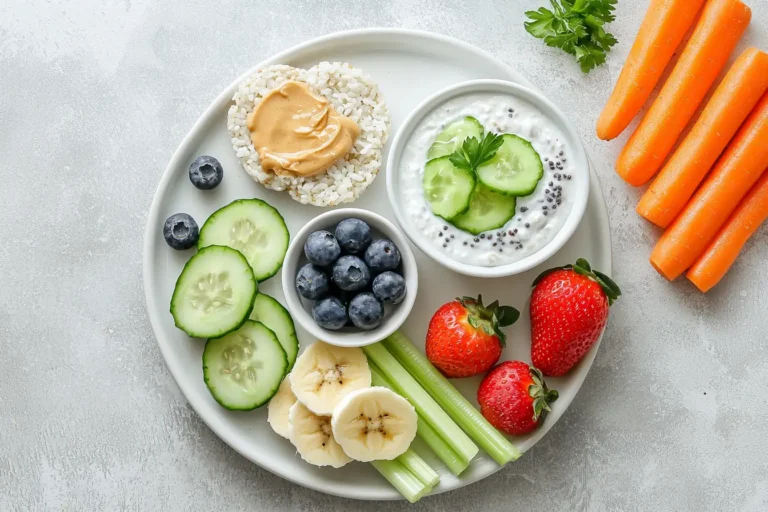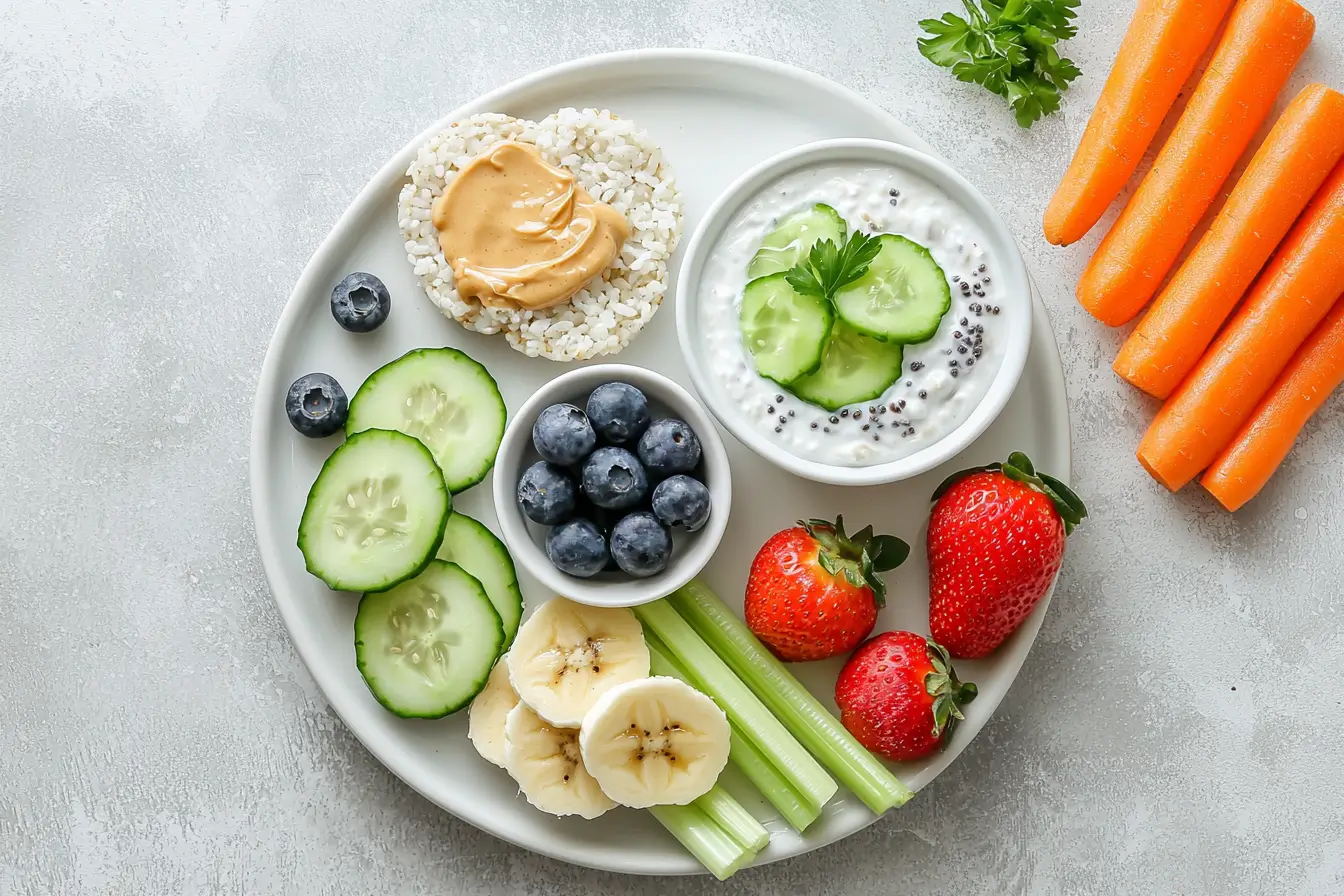Low FODMAP Diet is more than just a trend—it’s a proven way to ease digestive discomfort. If you’re tired of bloating, gas, or unexplained gut pain, this science-backed approach may offer the relief you’ve been seeking. I watched a close friend go from avoiding meals to finally enjoying food again after learning how specific carbs affect digestion. In this guide, we’ll break down how the low FODMAP diet works, what to eat, and how to find your personal triggers. Let’s make your gut feel good again—one smart bite at a time.
Understanding the Low FODMAP Diet
What Does Low FODMAP Actually Mean?
FODMAP stands for Fermentable Oligosaccharides, Disaccharides, Monosaccharides and Polyols—a group of short-chain carbohydrates that are poorly absorbed in the gut. These compounds can ferment in the intestines, leading to gas, bloating, pain, and even diarrhea. The low FODMAP diet eliminates these foods temporarily to help people identify their individual triggers.
During the elimination phase, high FODMAP foods like onions, garlic, apples, wheat, and milk are removed. After a few weeks, foods are gradually reintroduced one group at a time. This way, you can pinpoint exactly which ones cause your symptoms. It’s not a forever diet—it’s a tool for identifying which carbs your body doesn’t tolerate well.
This method has been clinically proven to help manage symptoms for those with Irritable Bowel Syndrome (IBS) and other gut sensitivities. In fact, it’s often recommended by GI specialists as a first-line treatment because it empowers people to take control of their diet without unnecessary medication.
Table of Contents

Low FODMAP Diet: Simple Guide for Real-Life Relief
A practical low FODMAP elimination plan featuring safe foods to reduce bloating and gut symptoms. Ideal for IBS relief.
- Total Time: 30
- Yield: 4 servings
Ingredients
Proteins: Chicken, turkey, eggs, firm tofu
Grains: Rice, oats, quinoa
Veggies: Zucchini, spinach, bell peppers
Fruits: Strawberries, kiwi, grapes (small portions)
Dairy: Lactose-free milk, cheddar cheese
Fats: Olive oil, herbs (no garlic or onion)
Instructions
1. Begin with elimination phase: avoid high FODMAP foods.
2. Eat from the approved list of low FODMAP ingredients.
3. Track symptoms daily in a food journal.
4. After 4 weeks, begin reintroduction phase.
5. Test one FODMAP group per week.
6. Pause and evaluate symptoms after each group.
7. Reintroduce tolerated foods into your regular meals.
Notes
Speak with a dietitian before starting.
Use Monash University FODMAP app for food reference.
Low FODMAP does not mean no-carb or bland.
Hydration and stress also impact gut health.
Choose simple recipes like grilled chicken or soups.
- Prep Time: 10
- Cook Time: 20
- Category: Special Diet
- Method: Elimination & Reintroduction
- Cuisine: Functional Health
- Diet: Vegetarian
Nutrition
- Serving Size: 1 plate
- Calories: 350
- Sugar: 4g
- Sodium: 120mg
- Fat: 9g
- Saturated Fat: 2g
- Unsaturated Fat: 7g
- Trans Fat: 0g
- Carbohydrates: 40g
- Fiber: 3g
- Protein: 25g
- Cholesterol: 65mg
Why It’s More Than Just a Trend
What makes the low FODMAP diet unique is that it’s rooted in research—not pop nutrition. Studies by Monash University in Australia first identified the impact these fermentable carbs have on IBS symptoms, which gave birth to this evidence-based approach. Unlike elimination diets that remove random foods, the low FODMAP plan uses a phased strategy to guide people through understanding their own body’s response to specific sugars and fibers.
It’s also flexible. Once you’ve identified your triggers, you can confidently build a sustainable, personalized eating plan. For example, some people may find they can tolerate lactose but not fructans (in wheat and garlic), while others might do fine with polyols but react strongly to galacto-oligosaccharides (in beans and lentils).
If you’re exploring better gut health alongside mindful eating habits, recipes like this Natural Mounjaro recipe for weight loss can complement your journey without upsetting your stomach. And if you love breakfast, a whole grain pancake mix guide can help you choose ingredients that align with your FODMAP-friendly goals.
What to Eat—and What to Avoid—on a Low FODMAP Diet
Low FODMAP Diet Food List: What You Can Eat

One of the biggest misconceptions about the low FODMAP diet is that it’s too restrictive. But when you break it down, there are still plenty of flavorful, satisfying options. The key is knowing which foods are low in fermentable carbs and how to combine them in meals that keep your gut calm.
Here’s a quick look at what’s safe during the elimination phase:
- Proteins: Eggs, firm tofu, plain chicken, turkey, beef, and fish are naturally FODMAP-free. A dish like this simple naked chicken recipe can be a lifesaver when you need a gut-friendly main.
- Vegetables: Zucchini, spinach, carrots, bell peppers, cucumbers, and tomatoes are all low FODMAP.
- Fruits: Strawberries, blueberries, kiwi, oranges, and grapes in small portions are usually tolerated.
- Grains: Oats, quinoa, white rice, corn tortillas, and gluten-free products made without high FODMAP fillers.
- Dairy Alternatives: Lactose-free milk, almond milk (check for additives), and hard cheeses like cheddar and parmesan.
- Other Essentials: Olive oil, herbs, spices (without onion/garlic), sugar, and maple syrup.
Pairing these safe foods into balanced meals can be as simple as grilled chicken with steamed zucchini and a small baked potato or a comforting grandma’s chicken soup made with low FODMAP swaps.
Foods to Avoid: Common FODMAP Triggers
Now for the tough love: some everyday foods are deceptively hard on the gut for those with FODMAP sensitivity. The usual suspects include:
- Fructose: Found in apples, pears, watermelon, and high-fructose corn syrup.
- Lactose: Present in milk, soft cheeses, yogurt, and ice cream.
- Fructans: Abundant in wheat, rye, garlic, onions, and leeks.
- Galacto-oligosaccharides (GOS): In beans, lentils, and soy milk.
- Polyols: Sugar alcohols like sorbitol and mannitol, found in stone fruits, mushrooms, and sugar-free gum.
These foods are removed during the elimination phase and reintroduced slowly to identify personal triggers. For example, while garlic is a top offender, infusing oil with garlic and straining it out allows flavor without FODMAPs—smart cooking trick, right?
It’s worth noting that not all gluten-free products are low FODMAP (some use apple fiber or inulin), so always check ingredient labels carefully.
A cozy recipe like soup village can be adapted easily with low FODMAP ingredients. Just swap out high-FODMAP onions for the green parts of scallions and use a bone broth base without added garlic.
By understanding the list of safe and risky foods, you can start building a menu that’s delicious, satisfying, and soothing to your system. And once you get the hang of it, you’ll realize it’s less about restriction and more about smart substitution.
Identifying Your FODMAP Triggers
How the Reintroduction Phase Works
Once you’ve followed the elimination phase of the low FODMAP diet for about 4–6 weeks, it’s time to start adding foods back in—one group at a time. This is where the magic happens. You’ll finally discover which FODMAPs cause your symptoms and which ones your body tolerates just fine.
Each week, you test one FODMAP group (like fructose or polyols) by reintroducing a single food from that category in small, then moderate, amounts over three days. After that, you return to the baseline low FODMAP diet for a few days to see if symptoms return. If not, you move on to the next group.
Let’s say you test lactose by drinking a small glass of lactose-free milk one day, a regular glass the next, and a larger one the third. If you feel fine, you can probably reintroduce dairy. If not, it’s a clear sign that lactose is one of your triggers.
This process gives you clarity—no guessing, no vague “trigger foods” list. It empowers you to tailor your diet instead of living in fear of food.
A balanced dinner like this shark steak recipe can serve as a reintroduction meal when testing fish or sauces. You’ll just need to ensure all sides and seasonings stay FODMAP-safe unless you’re testing a specific ingredient.
The Most Common FODMAP Culprits
Wondering where most people trip up? You’re not alone. Some FODMAP groups are more problematic than others, and research shows that fructans and lactose top the list for triggering bloating, gas, and cramping.
- Fructans: These are found in wheat, garlic, onions, and leeks. Even tiny amounts can spark symptoms.
- Lactose: Many people discover they’re mildly or fully lactose intolerant through this process.
- Polyols: These sugar alcohols lurk in sugar-free candies, gums, and some fruits like apples and peaches.
By the end of the reintroduction phase, many people can tolerate moderate amounts of certain FODMAPs or find that combining small amounts of different groups doesn’t cause a problem.
This is where freedom begins. For example, you might not tolerate a soft cheese sandwich with apples, but a small portion of aged cheddar over a salad may be just fine.
If you’re craving comfort food again, try easing back into variety with gentle recipes like this chicken orzo bake. Use gluten-free orzo and test it once you’ve cleared the wheat group in your reintroduction.
Do You Need the Low FODMAP Diet?

Signs You Might Benefit from Going Low FODMAP
If you’ve been dealing with unexplained bloating, gas, abdominal pain, or irregular bowel movements, the low FODMAP diet might be the relief you’ve been searching for. But how do you really know if it’s time to try it?
Here are the most common signs:
- You’ve been diagnosed with IBS (Irritable Bowel Syndrome): Doctors often recommend this diet as a first-line treatment for IBS symptoms.
- You feel worse after eating healthy foods like apples, beans, or whole grains: These are high in FODMAPs, and your gut may be reacting to them, not the nutrients themselves.
- Bloating is a daily issue: If your stomach often feels distended or painful by afternoon, fermentable carbs might be to blame.
- You’ve tried other gut health strategies with little success: If probiotics, fiber adjustments, or gluten-free eating haven’t helped, the FODMAP approach offers a structured path forward.
- Your symptoms are inconsistent and frustrating: Since FODMAPs are in many different foods, random reactions may start to make sense once you isolate the true triggers.
The diet isn’t just for people with IBS either. Some individuals with small intestinal bacterial overgrowth (SIBO) or other functional GI issues also find relief using this method.
An approachable starting point? Modify one meal a day with a simple, gut-friendly dish like this buckwheat pancake mix to see how your body responds without committing to a full elimination right away.
Getting Started Safely and Confidently
Before starting the low FODMAP diet, it’s smart to consult a dietitian or healthcare provider familiar with GI issues. They can guide you through the phases, ensure nutritional balance, and help you avoid unnecessary restrictions.
Here are quick-start tips:
- Keep a symptom journal: Note what you eat, how you feel, and patterns over time.
- Use apps like Monash University’s FODMAP app: It’s the gold standard for tracking food content.
- Batch cook meals that use safe ingredients—like this easy frozen breakfast pizza using FODMAP-safe toppings—to stay on track without stress.
- Don’t rush the process: It’s tempting to reintroduce foods too quickly, but spacing it out helps you clearly identify triggers.
Done correctly, the low FODMAP diet isn’t about lifelong restriction. It’s a process of discovery that allows you to eat freely again—with confidence, not confusion.
Frequently Asked Questions
What can you eat on the low FODMAP diet?
You can enjoy protein-rich foods like meat, eggs, and firm tofu, along with low FODMAP fruits (kiwi, strawberries, oranges), veggies (zucchini, spinach, carrots), gluten-free grains, and lactose-free dairy. Simple meals like grilled chicken with rice and steamed zucchini are safe choices.
What not to eat on a low FODMAP diet?
Avoid high FODMAP foods like garlic, onions, apples, wheat, milk, lentils, and sugar alcohols (like sorbitol or mannitol). These often cause gas, bloating, and discomfort.
What is the most common FODMAP trigger?
Fructans, found in wheat, onions, and garlic, are among the most common triggers. Lactose (in dairy) is also a close second. Each person’s sensitivity differs, so testing is key.
How do you know if you need low FODMAP?
If you experience persistent digestive issues—especially bloating, abdominal pain, gas, or irregular stools—you may benefit from trying the low FODMAP diet, especially if other approaches haven’t helped.
Conclusion :
The low FODMAP diet isn’t about perfection—it’s about progress and empowerment. It helps you connect the dots between your food and your symptoms, providing clarity when you’ve felt stuck. Whether you’re managing IBS or just searching for gut peace, this diet offers a personalized roadmap to better digestion and freedom on your plate. With smart recipes, proper guidance, and a little patience, you’ll be back to eating confidently—and joyfully—in no time.

